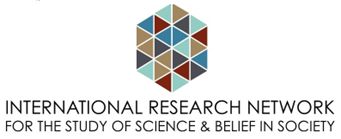Science and Religion in Europe: A modular curriculum (ScREaMC)


Project Science and Religion in Europe: A modular curriculum (ScREaMC) arose out
of a long-standing collaboration between the two investigators of the project
(Tampakis and Navarro), concerning non-Anglosaxon perspectives on the History of
Science and Religion. There are many science and religion courses, offered in many
universities around the world. However, even in the well-established spaces of the
USA and Europe, there is still a focus on Protestant, Anglo-American perspectives,
which begets its own set of norms. Catholic national formations, such as Spain,
Portugal, Italy or Poland, as well as Orthodox countries like Greece or Russia have
received far less attention. Recent scholarship has started to address the lacunae, but
there is still a significant lag in these geographical and cultural milieus. This project is
an attempt to widen the scope of a Science and Religion curriculum, both spatially as
well as denominationally.
Project goals and aims
The project is built around three organizing principles.
- It includes historiographical perspectives and case studies not only from
Protestant spaces, but also from Orthodox and Catholic exemplars. Its main historical
space is that of Europe, but it strives to include perspectives not only from ignored
European narratives, such as the Jewish and Islamic traditions on science and religion,
but also of decidedly non-European space of “otherness”, like India and Argentina, to
problematize the notion of Europe itself.
- The curriculum is modular, so that it can be adjusted for a variety of formats
and target audiences. Examples of audiences include Summer School attendees,
undergraduate students in History, Theology and/or HPS departments and graduate
students of the same disciplines. The developed curriculum includes twenty Units
organized around five Themes, and one Stand-alone Lecture, which can be used to
create different educational structures. Units have been created for different time
lengths, ranging from 45 to 210 minutes.
- The curriculum strives to be at the same time immediately usable by any
educator, but also flexible enough to be capable of being fine-tuned for a specific
audience. To that end, it comes fully furnished with relevant educational material,
such as documentaries, videos, primary sources and relevant scholarship. It also
includes a feedback form.
The end result of the project is a modular curriculum, centered around five themes:
(i) “The interaction of Sciences and Religions as an historiographical
problem”
(ii) “Nature and the Divine in the Middle Ages”
(iii) “Natural Sciences, Christianities, Modernity”
(iv) “Perceptions of Science and Religion”
(v) “Ideologies, Science, Religion”.
In each Theme, the first Unit (A1, B1 and so on), is meant to be introductory, stand-
alone lectures that introduce the theme. Its intended use would be in summer schools,
week-long introductions, or one-off presentations to a scholarly, but not specialist
audience. They could also be used to present this specific theme as part of a different
curriculum, for example in pre-graduate History of Science or Religious Studies.
Units 2 and 3 and each theme are meant to be used in conjunction, covering the same
material as Unit 1 but in much greater length. These ten lectures would form the
backbone of a standard academic thirteen-lecture long course on Science and
Religion.
The four final units (A4, B4 and so on) are meant to be a more in-depth introduction
to a specific subject, that could be selected alongside Units 2 and 3 to create a
standard curriculum. They could also be used as a standalone presentation of a subject
added to a specialized relevant curriculum, such HPS or Theology graduate studies.
By design, the investigators of the project decided these advanced Units to focus on
topics that are rarely brought up in standard curriculums, such as case studies of
Orthodox Christianity’s interactions with the study of nature or decolonizing attempts
within the field.
Finally, the 20 th Unit is a standalone, autonomous unit which could be given to a
general public, and which touches upon myths and realities in science and religion. Its
format was constructed considering a standard 45-minute length, but it could easily be
expanded as a 2-hour lecture or contracted to a 30-minute presentation.
Principal Investigators:
Kostas Tampakis, Senior Researcher, National Hellenic Research Foundation
Jaume Navarro, Ikerbasque Research Professor at the University of the Basque
Country
The project was funded by the International Network of Science& Belief in Society,
under its Collaborative 2022-2023 Grant scheme.
| Attachment | Size |
|---|---|
| 490.73 KB |


